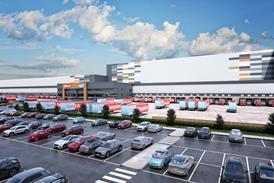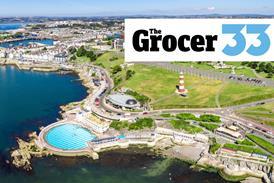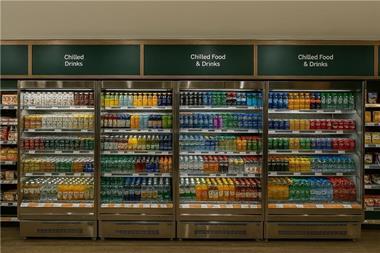Europe's grocery industry has come a long way since the days of the corner shop. ECR Europe claims to know how to take the industry forward from here. Or does it? Julian Hunt reports
Those wandering around the ECR Europe gathering in Glasgow last week would have found it hard not to get swept along by the enthusiasm of those who believe passionately that the grocery industry has come a long way since the Efficient Consumer Response revolution first hit these shores. The 3,000 or so delegates from 49 countries who attended this year's annual conference the movement's sixth since it was formed clearly believe ECR has something to offer.
However, away from the razzamatazz and slick presentations, you could detect plenty of scepticism. And there were those who clearly felt ECR had hit a critical point in its development. It would be too dramatic to say the movement has come to a crossroads, but a number of paths are now opening up and one of them could lead to ECR fizzling out, as it has done in the US.
The reason is simple: after years preaching about the benefits of ECR, its practitioners need to provide tangible evidence of how much has been achieved. Has it really grown the cake, or just enabled the better companies to take a bigger chunk of existing business?
Sceptics also point out that while the CEOs, logistics and IT directors of Europe's top retail companies support collaborative working, there still needs to be more support in buying departments which remain focused on day to day trading issues. A quick look at the job titles of retail delegates attending Glasgow confirmed their worst fears.
And then there is the inevitable cry that ECR is only for the big boys. Not so, says Antony Burgmans, CEO of Unilever and ECR Europe co-chairman: "ECR is not capital intensive, it's knowledge intensive. So it's freely available to the smaller players."
Burgmans makes no secret about his irritation with this line of questioning and probably with some justification. If the Glasgow conference demonstrated anything it was how far the movement has come in trying to attract smaller players. Much of the baffling jargon that first surrounded ECR has been replaced by language that is more appealing to newcomers. At the same time, there was evidence at Glasgow of the practical work now underway. Sainsbury, for instance, outlined its work on an "entry level" scorecard designed to ease smaller suppliers into the world of ECR.
If you accept that ECR is more accessible these days, it could be partly due to the fact its advocates realise it's more sensible to do things 85% right and get 99% results rather than strive to do them 100% right for 100% results.
So what has ECR actually achieved? When it was founded, there was a belief it would lead to cost savings of 5.7% in the supply chain. As yet, nobody has tried to quantify whether those savings have been realised. But Luc Vandevelde, Marks and Spencer boss, and ECR Europe's other co-chairman, says you don't have to look far to see that ECR has helped the industry become more efficient at a time of consumer price deflation. And in so doing he thinks it may even have exceeded its original target: "Retailers and suppliers have increased their profitability and we have products with better value at better cost. I am sure ECR contributed."
Burgmans says the benefits are hard to quantify because "the bar is always being raised". By that he means consumers, and the industry which serves them, are never fully satisfied. But he adds: "Where ECR is practised you can see the interface costs between our best customers and our worst and the difference is a factor of 100%."
ECR has also led to the demise of the adversarial relationships of the past, says Burgmans, who also claims category management is "more and more a way of life; a way of working". Nevertheless, he accepts more could still be done to improve efficiency through the supply chain, particularly when it comes to out of stocks. It was always the dream of ECR Europe's founders that this problem would one day be nailed. And Unilever's CEO is clearly disappointed that out of stocks are still such an issue between 10% and 40% of products can be unavailable on any busy Saturday in Europe.
Tackling this problem will require a lot of effort on the part of retailers and manufacturers. And a presentation by Daniel Corsten of the University of St Gallen revealed just how much work will be required. Corsten unveiled a battery of complex statistics based on a survey of 200 European companies to show how the adoption of ECR principles can lead to higher turnover and profit, better business processes and results that benefit both suppliers and retailers. Despite his positive spin, Corsten's research also found that while ECR was not dead across Europe "it is still in a pilot stage". And he added: "ECR is alive but not kicking yet across Europe."
The fact this presentation was needed at all shows that the supporters of ECR realise they need to provide something tangible to win over those cynics who still believe the whole thing is common sense made difficult.
The good news is that the UK appears to be ahead of the game when it comes to turning pilots into processes that add value to supply chains. And Tesco boss Terry Leahy is one of those who claim ECR works for his business. "It creates much more value than cost," he says. Leahy believes the ECR movement is an important way in which retailers and suppliers can come together to find out how to respond to the massive challenges they face.
At worse, that means ECR may have morphed into a glorified debating club in itself, no bad thing. But ECR's biggest backers claim they are creating something more fundamental. On that score, at least, the jury is still out.
{{FEAT. COVER }}
Close menu
- Home
- Retail & Wholesale
-
Products & Suppliers
- Back to parent navigation item
- Products & Suppliers
-
Product Categories:
- Back to parent navigation item
- Product Categories:
- Alcoholic drinks
- Bakery
- Cereals & breakfast
- Cheese
- Chicken & poultry
- Chocolate
- Confectionery
- Crisps, nuts & snacks
- Dairy
- Fish
- Fresh produce
- Frozen
- Household
- Meat
- Own Label
- Sauces & condiments
- Seasonal
- Soft drinks
- Vaping
- Vegan & plant-based
- World foods
- Suppliers
- People
- Reports & Data
-
Topics A-Z
- Back to parent navigation item
- Topics A-Z
-
Popular topics:
- Back to parent navigation item
- Popular topics:
- Cost of living crisis
- Crime
- Deposit Return Schemes
- Finance
- Government & Regulation
- Health
- Inflation
- Loyalty
- Marketing
- Mergers & Acquisitions
- New Product Development
- Sourcing
- Supply chain
- Sustainability & environment
- Technology
- Ultra Processed Foods
- Vaping
- A-Z all topics
- Content by type:
- Events
- Ask iA (beta)
- Subscribe now
Sign in to comment on this article
Not logged in before? Register for FREE guest access today.
You will be able to:
- Read more stories
- Receive daily newsletters
- Comment on stories
Advert















No comments yet